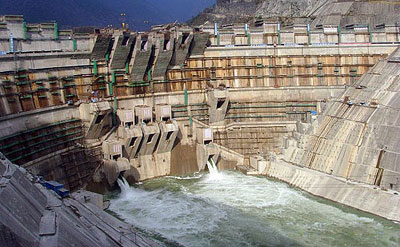Controversy Still Brewing Around Mekong River Dam

China's fourth dam along the Mekong River (known as the Lancang River in China), Xiaowan, which can generate 4,200 megawatts of power, is due to be completed by 2012 at a cost of nearly 4 billion US dollars. But the controversy about possible negative effects on the countries along the lower Mekong River continues.
Southeast Asian media and environmentalists are blaming the Chinese dams for contributing to the drop in water levels impacting communities in the countries along the lower Mekong including Burma, Cambodia, Laos, Thailand and Vietnam. A recent editorial in the Bangkok Post stated, "China is fast failing the good-neighbor test in the current Mekong River crisis."
According to the Inter Press Service, the water level in the Mekong River dropped to a record 50-year low in March.
Last Thursday at a routine press conference the Ministry of Foreign Affairs Spokesman Hong Lei responded to the accusations by stating that during the process of water resource development, China has attached great importance to protecting the environment, and is deeply concerned about the plight of countries downstream from the hydropower stations.
The Cambodian Prime Minister Hu Sen has also claimed that the lowered water levels of the Mekong River are due to the effects of climate change, and that connecting them to the construction of dams by China is a mistake.
At the press conference last Thursday, Hong Lei went on to say that China and the countries joined by the Mekong River continue to share friendly relations, and that China's use of the river's resources are in accordance with those of the South Asian countries joined by the river.
This article was edited by Ruoji Tang
Links and Sources
Blame on Chinese Dams Rise as Mekong River Dries Up
中国代表将出席湄公河峰会 否认建坝致下游缺水
中方充分照顾澜沧江下游国家关切
The views posted here belong to the commentor, and are not representative of the Economic Observer |
Related Stories
Popular

- INTERVIEW
- Interview with Martin Wolf-FT Chief Economics Comm...
- The EO sat down with Martin Wolf and discussed QE, the SDR, and where the international ec...
Interactive
Multimedia

- EEO.COM.CN The Economic Observer Online
- Bldg 7A, Xinghua Dongli, Dongcheng District
- Beijing 100013
- Phone: +86 (10) 6420 9024
- Copyright The Economic Observer Online 2001-2011
















